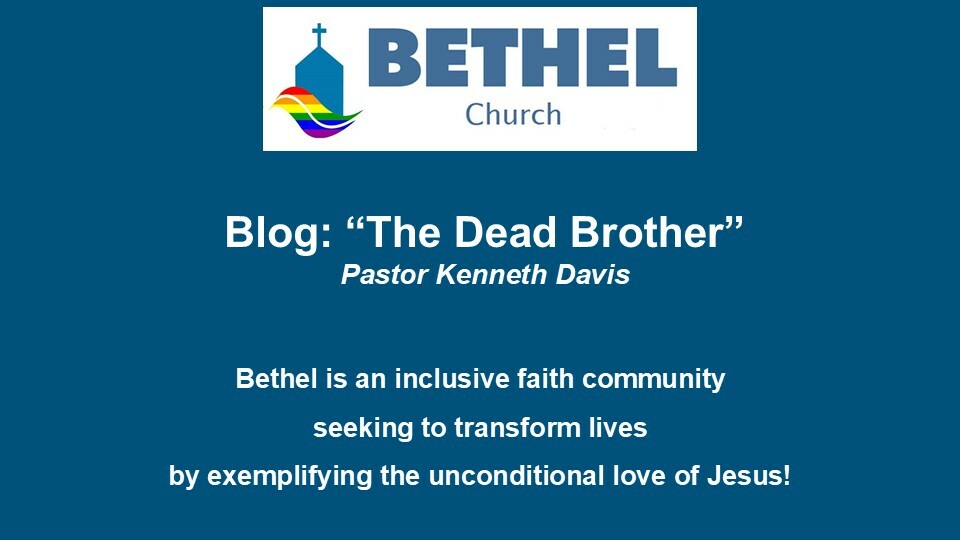This Week's Blog - "The Dead Brother"


In times of difficulty, we often turn to stories of miracles for comfort and inspiration. One such powerful story is the raising of Lazarus, a narrative that offers profound insights into faith, grief, and the nature of resurrection.
At its core, this tale revolves around a family portrait - Mary, Martha, and their brother Lazarus. Each sibling embodies different aspects of faith and relationship with the divine. Mary, known for anointing Jesus' feet with expensive oil, represents the contemplative disciple who loves to listen and learn. Martha, often misunderstood, exemplifies fierce faith and trust, believing that with divine presence, change is always possible. Then there's Lazarus, whose very name means "God is my help."
When Lazarus falls ill, his sisters send word to Jesus, simply stating, "The one you love is sick." These nine words carry immense weight, filled with urgency, desperation, and hope. They reflect a common human experience - the expectation that our close relationships should shield us from suffering or guarantee immediate aid in times of crisis.
Yet, the response to this plea is unexpected. Instead of rushing to Lazarus' side, Jesus delays. This delay, mystifying to his disciples and agonizing for Mary and Martha, raises profound questions about the nature of divine timing and human expectations. How often do we demand immediate responses to our needs, not just from our loved ones, but from the divine as well?
Interestingly, Jesus' apparent lack of urgency doesn't indicate a lack of care. Sometimes, those who help us most are not driven by panic or anxiety but approach situations with a measured response. This teaches us an important lesson about patience and trust in the face of crisis.
When Jesus finally decides to go to Lazarus, he faces opposition from his disciples, who fear for his safety. This mirrors the resistance we often encounter when we decide to make significant changes in our lives or confront difficult situations. It's a reminder that the path to transformation is rarely easy or universally supported.
Upon arriving, Jesus is confronted with the stark reality of death. Lazarus has been dead for four days, and as one commentator bluntly puts it, "by now he stank." This graphic detail underscores the finality and physicality of death, challenging any notion of an easy or sanitized resurrection.
Both Mary and Martha confront Jesus with the same burning question: "If you had been here, my brother would not have died." Their grief and disappointment are palpable, reflecting the spiritual crisis many face when confronted with loss and perceived divine absence. It raises the age-old question: Why does God allow suffering?
Jesus' response, "I am the resurrection and the life," invites us to ponder the meaning of resurrection. Is it only about life after death, or can resurrection occur here and now, in real time? The story suggests both - resurrection is about eternal life, but it's also about transformation and renewal in our present existence.
One of the most poignant moments in the narrative is Jesus' emotional response. When he sees Mary weeping, he is "deeply moved in spirit and troubled," and he weeps. This display of emotion challenges stereotypes about masculinity and divinity. It reminds us that empathy, compassion, and shared sorrow are not weaknesses but profound expressions of love and humanity.
The climax of the story comes when Jesus calls Lazarus out of the tomb. But the miracle doesn't end there. Lazarus emerges still bound in his grave clothes, and Jesus instructs the community to "unbind him and let him go." This final act holds a powerful lesson: while divine intervention may initiate transformation, it often requires human hands to complete it. We are called to participate in each other's liberation and renewal.
This story challenges us on multiple levels. It asks us to examine our expectations of divine intervention and timing. It invites us to confront the reality of death and decay in our lives - not just physical death, but the "deaths" of dreams, relationships, or hopes. Where in our lives do we need to hear the call to "come out" of our tombs?
Moreover, it calls us to look around and see who in our community needs unbinding. Who is stumbling out of their personal tombs, still wrapped in the trappings of their past struggles? How can we be the hands that remove those bindings and set them free?
The raising of Lazarus is not just about a miraculous resuscitation. It's a story about community, faith in the face of disappointment, the power of empathy, and the collaborative nature of transformation. It reminds us that resurrection - be it spiritual, emotional, or relational - often occurs in the midst of messiness and even in places that "stink."
As we reflect on this powerful narrative, let's ask ourselves:
1. Where in our lives are we waiting for divine intervention? How might we need to adjust our expectations or timing?
2. What "grave clothes" are we still wearing, even as we try to step into new life?
3. Who in our community needs unbinding? How can we participate in others' liberation and renewal?
4. Where do we need to allow ourselves to weep, to be "deeply moved" by the pain around us?
5. In what areas of our lives do we need to hear the call to "come out" and embrace new life?
The story of Lazarus reminds us that hope persists even in the face of death, that divine timing may not align with our expectations, and that true transformation often requires both miraculous intervention and community participation. May we have the courage to confront the "tombs" in our lives, the compassion to weep with those who mourn, and the willingness to both receive and offer the unbinding that leads to true freedom.